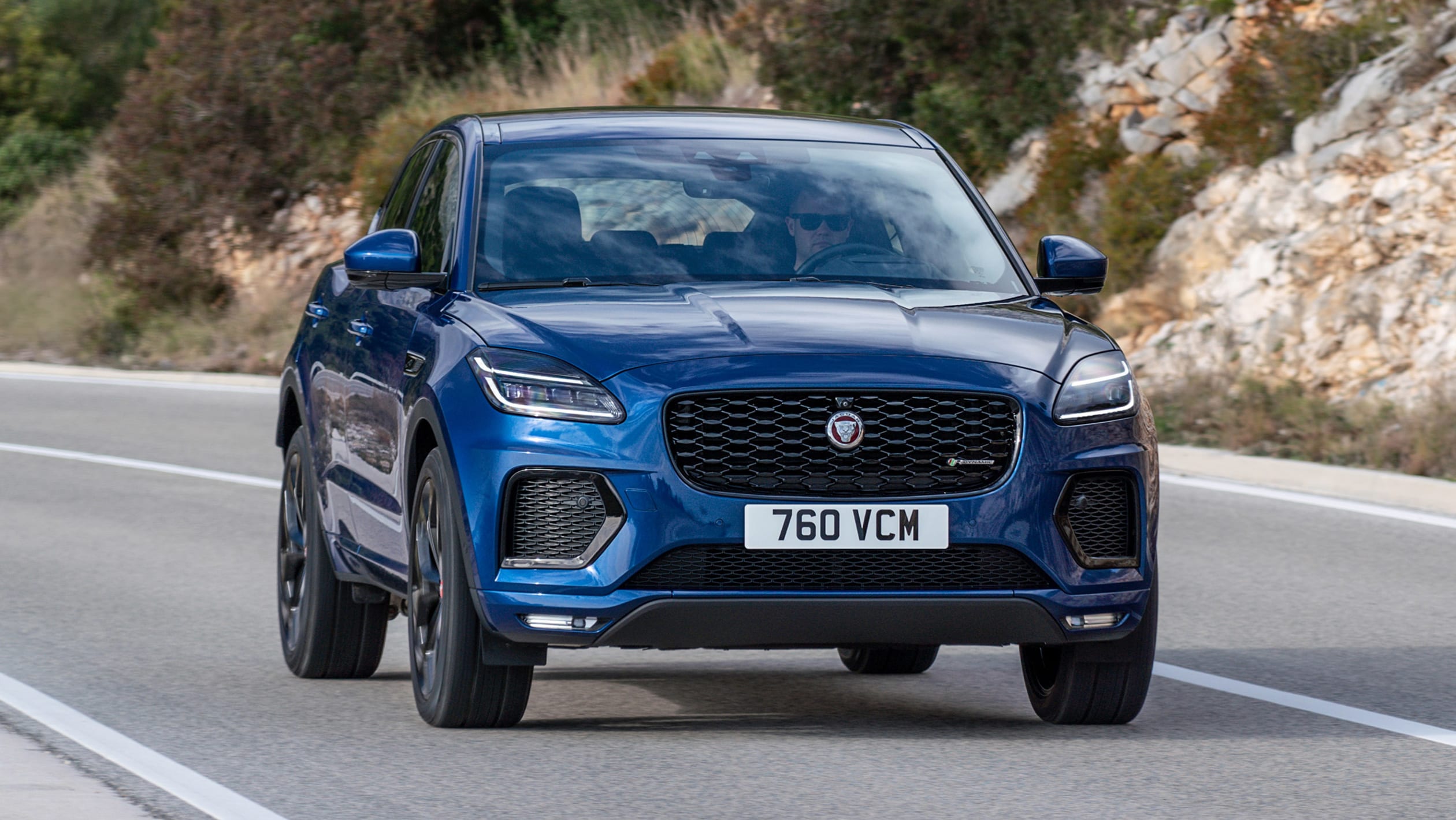Jaguar E-Pace has been updated with fresh new looks, while a plug-in hybrid option is offered for the first time.
An updated version of the Jaguar E-Pace crossover has been launched. Exterior styling tweaks mask a switch to the same PTA platform as the latest Range Rover Evoque, allowing an all-new infotainment system and a fresh plug-in powertrain.
On the outside, the facelifted E-Pace features a redesigned front bumper, a new mesh radiator grille and a fresh pair of LED headlights, which feature Jaguar’s latest ‘Double J’ lighting signature. Jaguar has also fitted a new undertray at the rear, along with revised LED tail-lights that are inspired by the units fitted to the all-electric I-Pace.
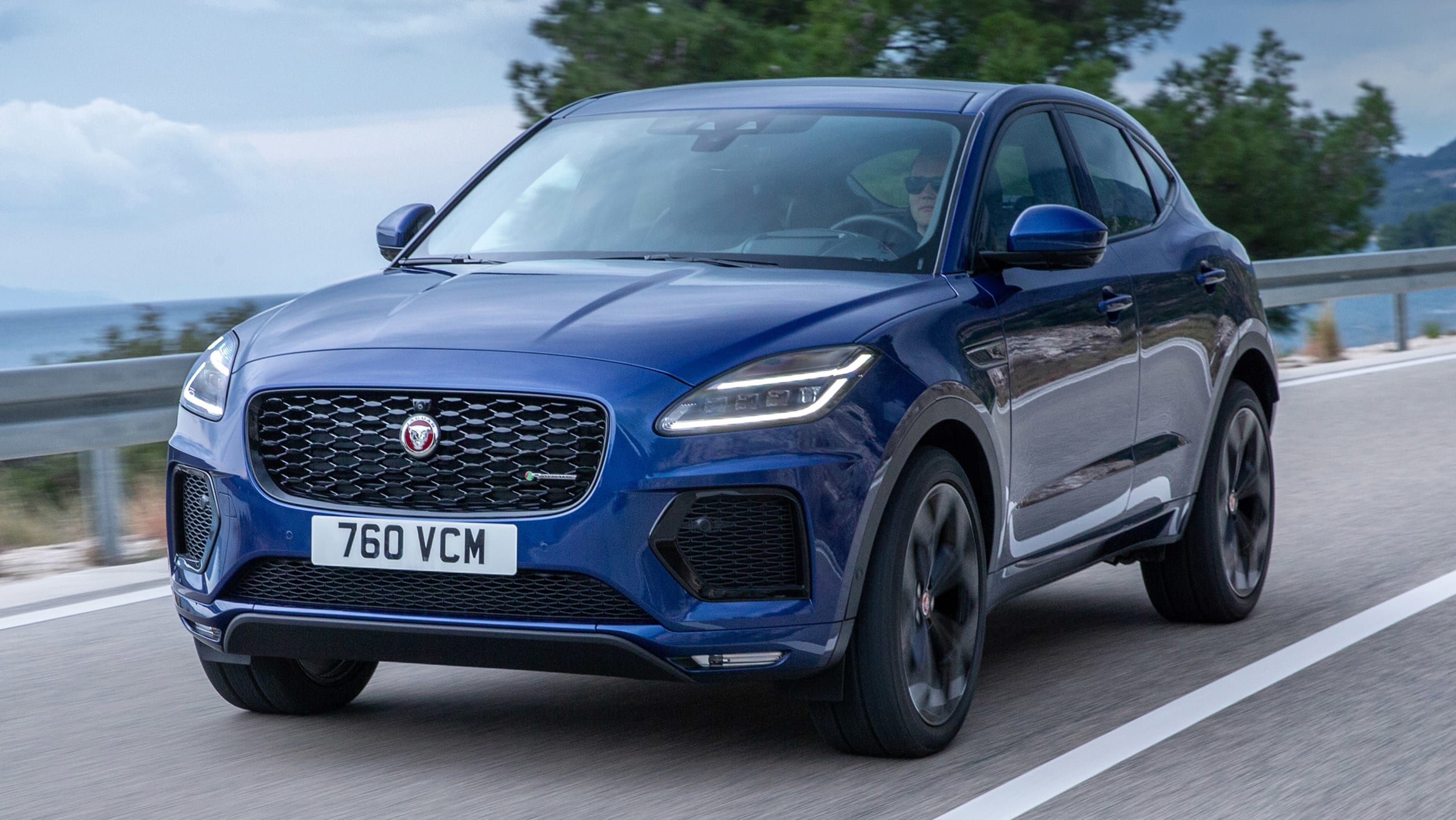
The changes to the cabin include a new drive selector, soft-touch trim around the instrument binnacle and a reshaped transmission tunnel, which makes more room for the driver’s knee.
The E-Pace also now benefits from a new 11.4-inch infotainment system, which is powered by JLR’s latest Pivi software. Jaguar says the screen has been designed for ease of use; 90 per cent of the system’s functions, such as media and navigation, can be accessed with just two inputs.
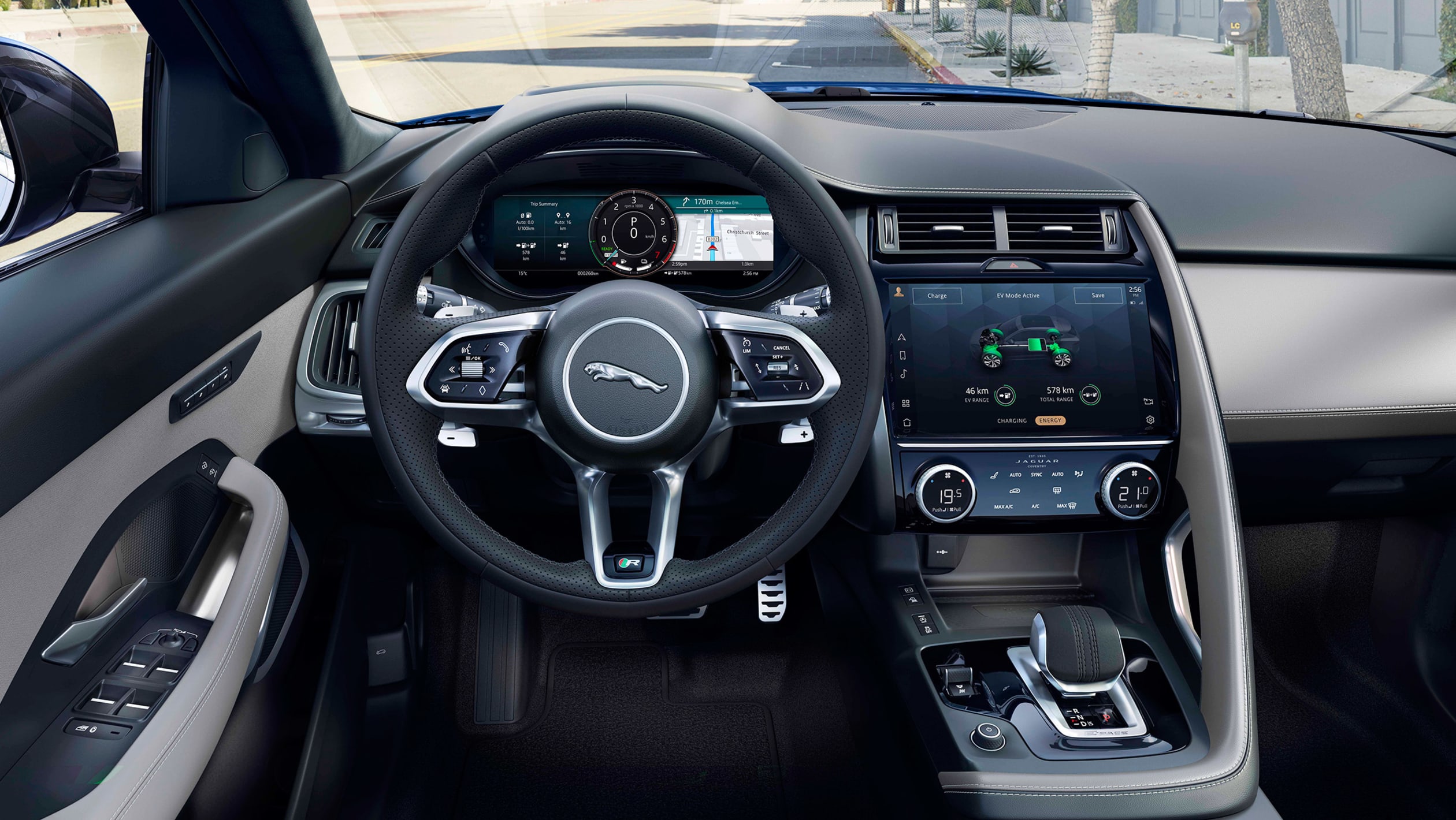
Over-the-air updates for software tweaks and mapping are supported as standard, while the touchscreen is paired with an updated 12.3-inch digital instrument cluster, which features displays for navigation, media and contact details.
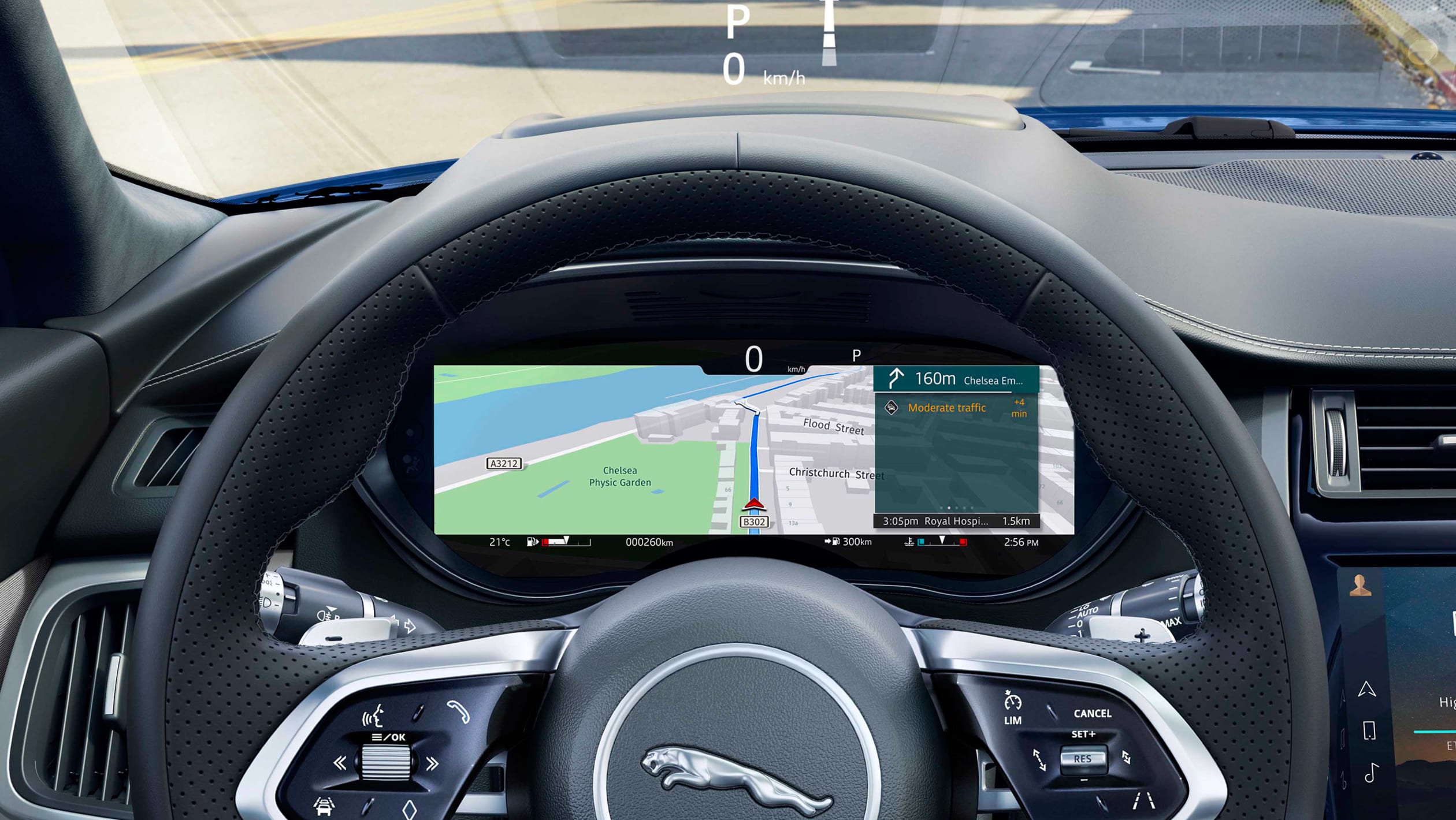
The engine line-up has been updated, too, and comprises three diesels, three petrols and a plug-in hybrid powertrain. The diesel range uses Jaguar’s 2.0-litre four-cylinder unit, and can be specced either with or without mild-hybrid assistance.
The entry-level model has 120kW and 380Nm of torque, which is sent through a six-speed manual transmission to the front wheels. Add four-wheel drive and a nine-speed auto, and the engine is backed up by a 48-volt integrated starter-generator and a compact lithium-ion battery pack. The flagship 150kW diesel uses the same gearbox and four-wheel-drive set-up.
The petrol line-up is also based around a 2.0-litre turbo four-cylinder unit, with buyers offered a choice of 148kW, 184kW or 221kW outputs. The three petrols all feature mild-hybrid technology and come with the nine-speed automatic gearbox and four-wheel-drive system as standard.
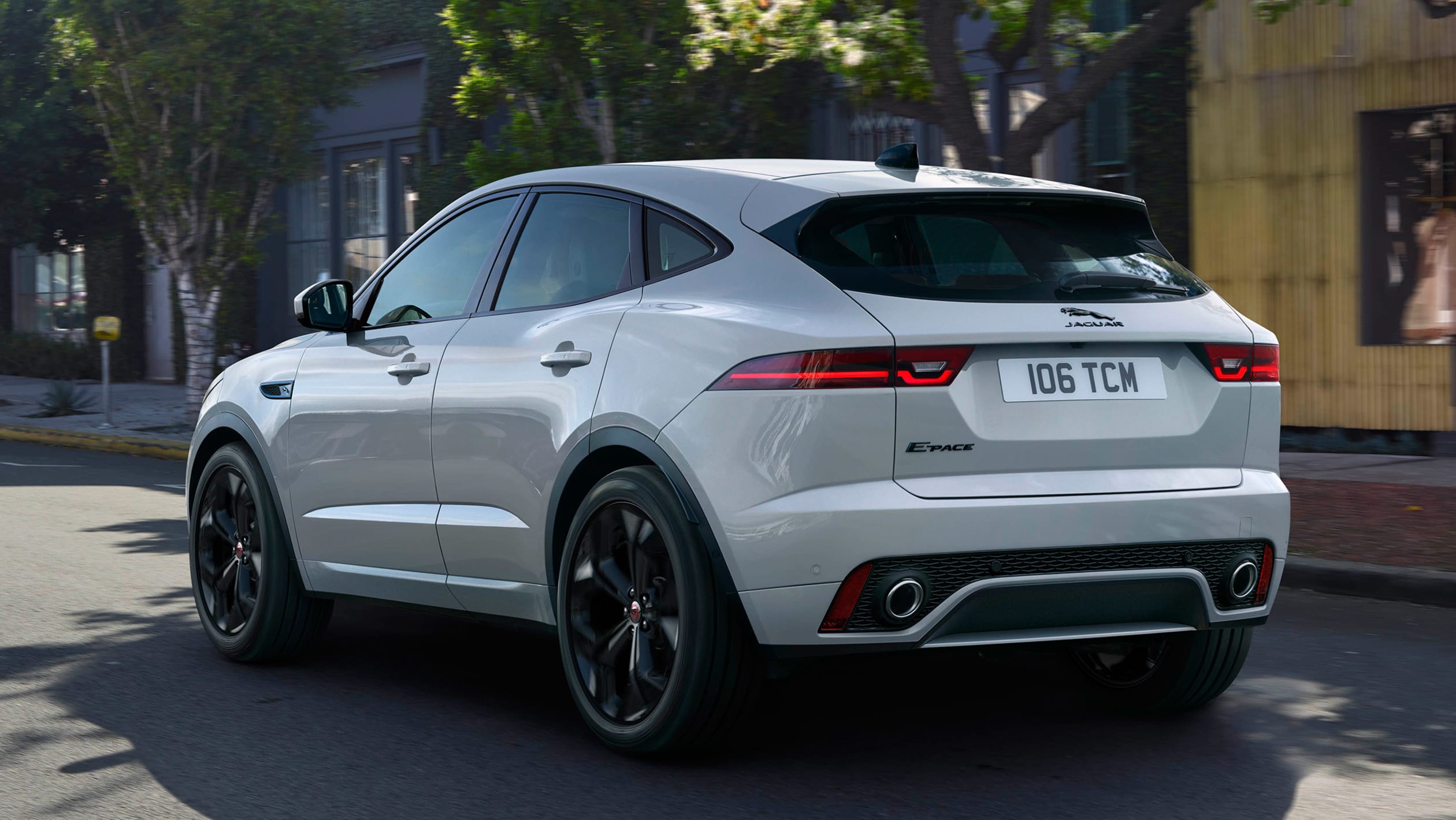
At the top of the line-up is the new P300e plug-in hybrid. It uses a 147kW 1.5-litre turbo three-cylinder petrol engine that drives the front wheels, an 81kW electric motor mounted on the rear axle and a 15kWh lithium-ion battery pack. Combined output for the system is 227kW, with 540Nm of torque.
Jaguar says that the PHEV powertrain provides the E-Pace with a 0-100km/h time of 6.5 seconds, an electric driving range of 55km.
As with the outgoing E-Pace, the new crossover keeps S, SE and HSE trim levels, but two new additions have bolstered the line-up. R-Design specification adds sports seats, a suede headlining and a split-rim sports steering wheel, while a Sport trim level – available only on the most powerful petrol-engined model – adds unique 20-inch alloys, active adaptive dampers, a power-operated tailgate and black exterior trim.
Luke Wilkinson




